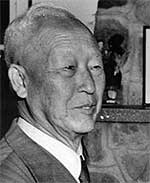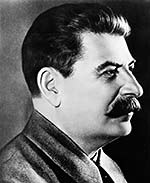The War Begins – the Invasion of South Korea
Background to the invasion
North Korea, under Kim Il-sung, had been secretly preparing to invade South Korea for several years...
 Show caption
Show caption
The Soviet Union (USSR) supplied weaponry, trained the North Korean armed forces and its experienced WWII generals devised the plan for the invasion. When the Chinese communists under Mao Zedong won their war with the nationalists in 1949, Mao too was able to assist North Korea. He sent back 20,000 Koreans who fought with the Chinese communists.
Joseph Stalin was at first reluctant to support Kim’s proposed invasion because he feared a major war with the United States of America (USA) might be the outcome. By early 1950 he changed his opinion, partly because the USSR had successfully tested its first atomic bomb in 1949. This would have the effect of making the USA more cautious in any response to any USSR military move. Secondly, Stalin had reason to believe the USA would not support South Korea if North Korea invaded. In January 1950 the American Secretary of State Dean Acheson implied in a speech that South Korea was not a vital area of interest to USA. In addition, the USA House of Representatives rejected a bill to send financial aid to the south. Though the bill was passed a month later, this also suggested to Stalin that America did not care much about Korea and would stand aside if the north invaded the south.
In April 1950 Kim Il-sung visited Moscow, and Stalin finally agreed to support an invasion. The plan was, to take all of South Korea in three weeks, before American intervention, should it happen, could be organised.
In mid-June North Korean units were secretly moved into position close to the 38th parallel while North Korea’s insurgents operating deep in South Korea intensified their activity. To counter the insurgents the south had to maintain a portion of its fighting troops far from the border. On 25 June, at 4.40am the North Korean assault began.

Teaching and learning activities for the classroom
The Korean War, the political background
The course and cause of the Korean War was mainly determined by nations and leaders outside of Korea. Your task is to search the website Australia’s Involvement in the Korean War to find answers to the following questions about the politics of the war.






Answer each question in two or three full sentences.
- What was the Cold War?
- How was the Cold War connected to the Korean War?
- Who were the anti-communist leaders and which one was the most powerful?
- Who were the communist leaders and which one was the most powerful?
- What is the connection between the Korean War and nuclear weapons?
- How did North Korea’s allies help it during the Korean War?
- Why did Australia become involved in the Korean War?
- Which leader did most to prolong the war and why?


















